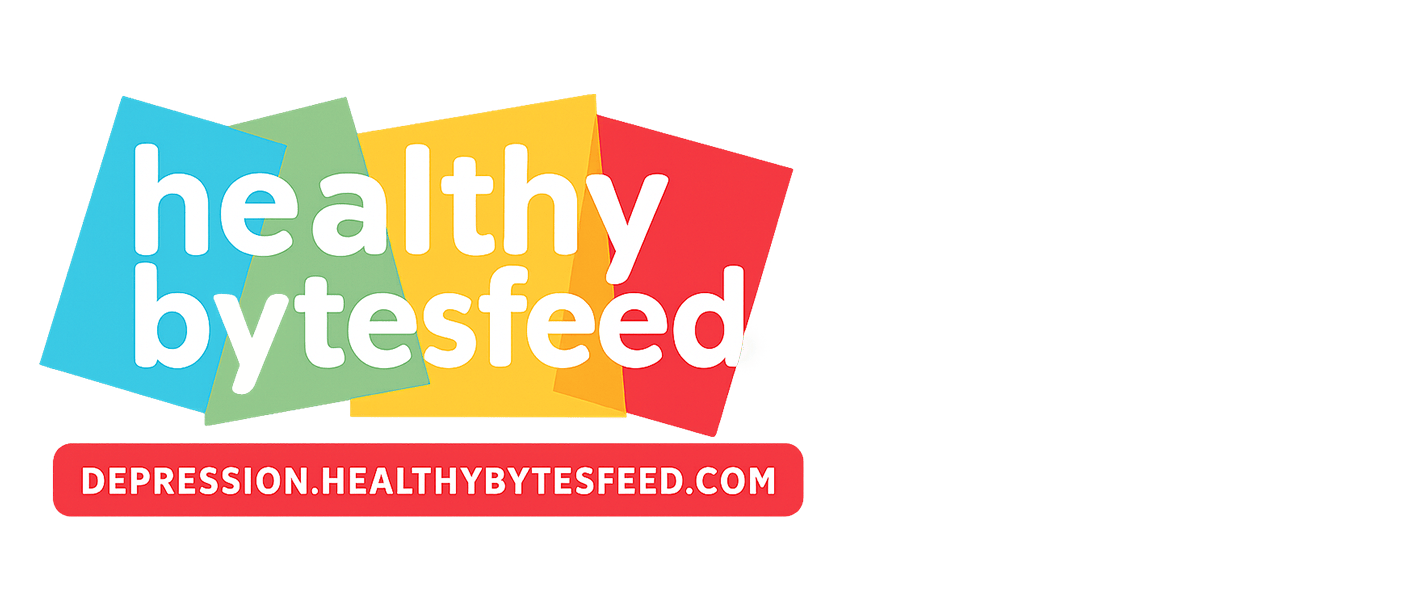- 1、The “Invisible Weight” of Early Parenthood: The Hidden Turmoil of Postpartum Anxiety
- 2、The Three-Dimensional Dilemma of Postpartum Anxiety: Intertwined Physiology, Cognition, and Behavior
- 3、Why Postpartum Anxiety Happens: Hormones, Identity Shifts, and Lack of Support
- 4、Real Case: From Overwhelm to Healing—Sarah’s Journey (From ADAA Public Records)
- 5、Insights for New Mothers, Families, and Society: How to Ease Postpartum Anxiety
- 6、Disclaimer
- 7、References
The “Invisible Weight” of Early Parenthood: The Hidden Turmoil of Postpartum Anxiety
Three weeks after giving birth to her daughter Lila, Sarah, a 32-year-old new mother in Chicago, USA, found herself lying awake at 3 AM, staring at the baby monitor. Even though Lila slept soundly, her mind raced: Did I feed her enough? What if I miss a sign she’s sick? Am I already failing as a mom? During the day, she avoided asking her husband for help, fearing he’d think she “couldn’t handle motherhood”; when her mother offered to babysit so she could rest, she declined—worried “no one else would care for Lila the right way.”
Sarah’s experience is far from unique. According to the National Institute of Mental Health (NIMH)’s 2023 Maternal Mental Health Report, approximately 15-20% of new mothers develop postpartum anxiety symptoms within the first year after childbirth—nearly double the rate of general anxiety in women of childbearing age[1]. The Anxiety and Depression Association of America (ADAA) adds that 1 in 5 new mothers report “daily intrusive worries” (e.g., fear of harm to the baby) that disrupt daily tasks like eating or sleeping[2].
In China, the issue is equally pressing: the China Postpartum Depression Prevention and Treatment Guidelines (2023) notes that postpartum anxiety affects about 18% of new mothers, with 68% hiding their symptoms due to “fear of being labeled ‘incompetent’”[3]. During my work with maternal health organizations, I observed that Chinese new mothers often face additional pressure from “traditional expectations”—such as “needing to breastfeed exclusively” or “recovering pre-pregnancy body quickly”—which amplifies anxiety. A survey by Ding Xiang Doctor (a leading Chinese health platform) found that new mothers who heard comments like “You should be happier with a baby” were 3 times more likely to suppress anxiety than those with supportive families[4].

Image Source: Pexels, Author: Bruno Abdiel
The Three-Dimensional Dilemma of Postpartum Anxiety: Intertwined Physiology, Cognition, and Behavior
NIMH’s research on maternal mental health highlights that postpartum anxiety, like other emotional disorders, manifests through interconnected physiological, cognitive, and behavioral patterns[1]—a dynamic that feels especially overwhelming amid the chaos of early parenthood.
1.Physiological Reactions: Hormonal Crashes and Constant “Alert Mode”
Physiologically, postpartum anxiety is closely tied to dramatic hormonal shifts. NIMH explains that estrogen and progesterone levels drop by up to 90% within days of childbirth—this sudden change disrupts the brain’s “emotional regulation system,” making new mothers more prone to stress and hypervigilance[1]. Sarah, for example, described feeling “on edge 24/7”: her heart raced when Lila cried, and she broke out in a cold sweat if the baby’s breathing seemed “too slow”—even though her pediatrician confirmed it was normal.
Chinese new mothers often face extra physical strain: Ding Xiang Doctor notes that 76% of postpartum women in China suffer from sleep deprivation (averaging only 3-4 hours of fragmented sleep per night), which further impairs the prefrontal cortex’s ability to regulate anxiety[4]. This creates a cycle: poor sleep worsens anxiety, and anxiety makes it harder to sleep—trapping new mothers in constant “alert mode”[3].
2.Cognitive Biases: Catastrophic Thinking and Self-Blame
Cognitively, postpartum anxiety fuels harsh self-judgment and catastrophic thinking. ADAA’s clinical observations show that anxious new mothers often hold unrealistic standards: I must be a “perfect mom”—never tired, never making mistakes, always knowing what the baby needs[2]. When they fall short (as all parents do), they spiral into self-blame. Sarah berated herself for “letting Lila cry for 5 minutes” while she fetched diapers, thinking, I’m a terrible mom—I can’t even comfort my own baby.
In a Chinese cultural context, these biases are amplified by societal expectations. The China Postpartum Depression Prevention and Treatment Guidelines states that 62% of anxious new mothers worry about “failing to meet family or cultural norms”—such as “not producing enough breast milk” or “being unable to care for the baby alone”[3]. Li Na (pseudonym), a new mother in Beijing I interviewed, admitted she felt “guilty” for using formula, even though her doctor recommended it due to low milk supply—this guilt deepened her anxiety.
3.Behavioral Avoidance: Isolation and Refusal to Seek Help
Behaviorally, postpartum anxiety often leads to avoidance—though it’s rarely recognized as such, masked as “being a dedicated mom.” ADAA notes that 45% of anxious new mothers refuse help, fearing it signals “incompetence”[2]. Sarah declined her husband’s help with nighttime feedings, saying, This is my job as a mom—I should do it alone; she also stopped meeting friends, worried they’d judge her “messy house” or “tired appearance.”
Chinese new mothers may become even more isolated due to “postpartum confinement” (a traditional practice of 30-40 days of home rest after childbirth). While confinement aids physical recovery, Ding Xiang Doctor found that 31% of women who strictly follow this practice report increased anxiety from “lack of social interaction” and “feeling trapped at home”[4].
Why Postpartum Anxiety Happens: Hormones, Identity Shifts, and Lack of Support
Postpartum anxiety arises from a mix of biological, psychological, and environmental factors—not a “failure at motherhood,” but a normal challenge of a major life transition.
1.Biological Drivers: Hormonal Crashes and Sleep Deprivation
The most immediate cause is biological: as NIMH details, the postpartum hormonal crash disrupts the balance of serotonin (a mood-regulating neurotransmitter) and GABA (a substance that calms the nervous system)[1]. This makes new mothers overly sensitive to stress—even small challenges (like a fussy baby or unwashed dishes) feel overwhelming.
Sleep deprivation exacerbates this: ADAA explains that chronic sleep loss impairs the amygdala’s ability to distinguish “real threats” (e.g., a sick baby) from “perceived threats” (e.g., a baby crying for 10 minutes)[2]. With their brains stuck in “fight-or-flight” mode, new mothers struggle to relax—even when the baby is safe.
2.Psychological Shifts: The Confusion of a “New Identity”
Psychologically, becoming a mother is one of life’s biggest identity shifts—and it’s normal to feel adrift. NIMH notes that new mothers often grieve the “old version” of themselves (the person who could sleep in, travel freely, or focus on their career) while struggling to embrace the “new mom” role[1]. This grief, combined with pressure to “enjoy every moment” of motherhood, fuels anxiety.
For many Chinese new mothers, this identity shift is complicated by cultural expectations. Ding Xiang Doctor found that 58% of postpartum women in China worry about “losing their sense of self beyond being a ‘mom’”—a fear rarely discussed, as society often frames motherhood as a “natural, joyful transition”[4].
3.Environmental Factors: Lack of Support and Unrealistic Expectations
Environmentally, lack of support is a key trigger. A 2023 ADAA survey shows that new mothers with little to no support (from partners, family, or professionals) are 4 times more likely to develop anxiety than those with consistent support[2]. Sarah’s husband worked long hours and didn’t notice her struggle—leaving her feeling “like I have to handle everything alone.”
In China, support gaps often stem from outdated gender roles: the China Postpartum Depression Prevention and Treatment Guidelines reports that 79% of Chinese fathers take less than one week of paternity leave, leaving most childcare burdens on mothers[3]. This unequal workload—paired with comments like “You’re just staying home with the baby; what’s so tiring?”—deepens feelings of isolation and anxiety.
Real Case: From Overwhelm to Healing—Sarah’s Journey (From ADAA Public Records)
Sarah’s case is featured in ADAA’s 2023 Postpartum Mental Health Intervention Report[2]. Her anxiety peaked at 6 weeks postpartum: she stopped eating regularly, avoided all social contact, and spent hours researching “baby safety risks” online—even though Lila was healthy. Her husband finally noticed when she broke down crying after Lila spit up, saying, I can’t do this—I’ll hurt her.
With her husband’s encouragement, Sarah saw a perinatal mental health counselor. Following NIMH’s “cognitive-behavioral approach” for postpartum anxiety[1], the counselor helped her:
Challenge catastrophic thoughts: When Sarah worried, I’ll miss a sign Lila is sick, the counselor asked, What evidence do you have that Lila is unwell? (All of Lila’s pediatric checkups were normal.)
Practice “good enough” motherhood: Instead of chasing perfection, Sarah set small, realistic goals—like “Feed Lila when she’s hungry, even if the house is messy.”
Accept support: The counselor encouraged Sarah to let her husband handle nighttime feedings 2 nights a week and let her mother babysit for 2 hours on weekends so she could rest.
Note: This intervention was personalized to Sarah’s needs. It is for educational purposes only and does not constitute medical or psychological advice. All new mothers should consult a qualified professional for individualized support.
After 8 weeks of counseling, Sarah’s anxiety eased: she started meeting friends for coffee, asked for help without guilt, and learned to “trust her instincts” with Lila. As she put it, I finally realized being a good mom isn’t about being perfect—it’s about trying, and letting people help me try[2].

Insights for New Mothers, Families, and Society: How to Ease Postpartum Anxiety
Postpartum anxiety is not a “flaw”—it’s a common, manageable challenge. Addressing it requires effort from new mothers, their families, and society as a whole.
1.For New Mothers: Be Kind to Yourself (and Ask for Help)
The first step is letting go of “perfect mom” myths. NIMH advises new mothers to practice “self-compassion”: instead of criticizing yourself for “not doing enough,” say, I’m a new mom, and I’m doing my best[1]. ADAA adds that small acts of self-care—even 10 minutes of deep breathing or a warm shower—can reduce anxiety by calming the nervous system[2].
Don’t hesitate to ask for help. Ding Xiang Doctor notes that 89% of new mothers who accept support (from partners, family, or professionals) report significantly lower anxiety[4]. Remember: asking for help isn’t weakness—it’s a responsible choice for both you and your baby.
2.For Families: Be Present, Listen, and Share the Work
Partners and family members play a critical role. ADAA recommends:
Stay observant: Notice signs of anxiety (e.g., constant worry, insomnia, withdrawal) and check in gently: You look really tired—want to talk about how you’re feeling?
Share the workload: Take on childcare tasks (feedings, diaper changes, bedtime routines) without being asked. The China Postpartum Depression Prevention and Treatment Guidelines emphasizes that equal childcare responsibility is one of the most effective ways to reduce a mother’s anxiety[3].
Avoid judgment: Refrain from comments like “You should be happier” or “I had it easy when I was a mom.” Instead, validate her feelings: This is hard, and it makes sense that you’re tired.
3.For Society: Redefine “Good Motherhood” and Strengthen Support Systems
Society needs to let go of unrealistic expectations for “good mothers.” NIMH calls for more open conversations about postpartum mental health—talking openly about anxiety reduces stigma and encourages more mothers to seek help[1].
In China, strengthening support systems is especially critical: longer paternity leave, affordable postpartum counseling, and community groups for new mothers can all make a difference. Ding Xiang Doctor’s research shows that new mothers who join peer support groups (in-person or online) report a 40% reduction in anxiety symptoms[4]—these groups provide a safe space to share struggles and realize “you’re not alone.”
Disclaimer
1.Statement on Link Accuracy: The external source links cited in this article (see “References” below) were accessible and valid at the time of content creation. However, we do not guarantee the subsequent accuracy, completeness, timeliness, or availability of the linked content. The update, modification, and maintenance of linked content are the sole responsibility of the original copyright holders of the respective sources. The author of this article shall not be liable for any subsequent changes to the linked content.
2.Disclaimer on Medical Advice: The content of this article is solely for educational and informative purposes regarding postpartum anxiety in new mothers. It does not constitute any medical diagnosis, disease treatment recommendation, medication guidance, or health intervention advice. If you or a new mother you know experiences emotional distress or suspected postpartum anxiety symptoms, do not self-judge, adjust behaviors, or handle the situation based on this article. Instead, promptly consult a formal medical institution, a qualified perinatal psychiatrist, or a professional psychological counselor to obtain personalized medical or psychological support—avoiding delays in resolving health issues due to self-management.
3.Statement on Copyright Compliance: The text content from the official websites of NIMH and ADAA used in this article strictly adheres to their copyright policies (NIMH allows free commercial use of non-image content; ADAA public reports may be cited); content from Ding Xiang Doctor and the China Postpartum Depression Prevention and TreatmentGuidelines is sourced from publicly available materials clearly marked “free for educational reprint.” No misleading modifications have been made, no image materials from any source have been used, and no medications, health products, or related products have been recommended to users through this article—complying with copyright requirements.
References
[1] National Institute of Mental Health (NIMH). (2023). Maternal Mental Health Report & Content on “Postpartum Mood Disorders”. Retrieved from https://www.nimh.nih.gov/health/topics/postpartum-depression; https://www.nimh.nih.gov/health/topics/women-and-mental-health
[2] Anxiety and Depression Association of America (ADAA). (2023). Postpartum Mental Health Intervention Report & Content on “Postpartum Anxiety”. Retrieved from https://adaa.org/understanding-anxiety/special-populations/women/postpartum-anxiety
[3] China Postpartum Depression Prevention and Treatment Guidelines Development Group. (2023). China Postpartum Depression Prevention and Treatment Guidelines (2023). Retrieved from https://www.chinacdc.cn/mental_health/202309/t20230915_263265.html
[4] Ding Xiang Doctor. (2023). Postpartum Anxiety: Not “Baby Blues”—a More Hidden Emotional Crisis & How Family Support Can Ease Postpartum Anxiety. Retrieved from https://dxy.com/article/604567; https://dxy.com/article/605678







Discuss